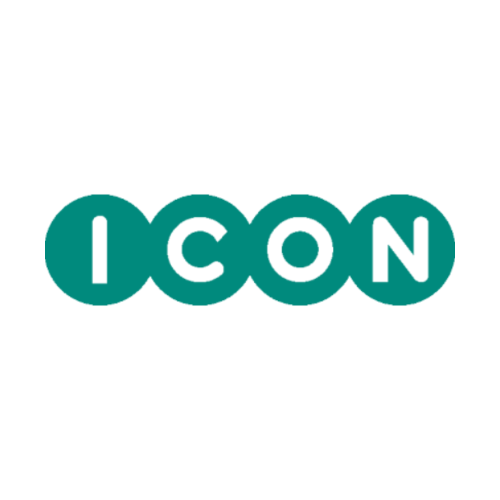.png?v=a3cd4f57986dc4396bfeac2b1e25a46c)
Navigating Regulatory Landscapes - FDA, EMA, & MHRA

Navigating Regulatory Landscapes: Comparing FDA, EMA, & MHRA in Clinical Trials
In clinical research, no matter how promising a new therapy may be, it will go nowhere without regulatory approval. Understanding the regulatory frameworks of the world’s major oversight agencies is critical not only for sponsors and CROs but also for the professionals building careers in this space.
The U.S. Food and Drug Administration (FDA), the European Medicines Agency (EMA), and the UK’s Medicines and Healthcare products Regulatory Agency (MHRA) are three of the most influential regulatory authorities in global drug development. While they share a mission to ensure the safety, efficacy, and quality of medicinal products, their approaches differ across jurisdictional boundaries. In this blog, we compare these three agencies across five key areas: jurisdiction, application processes, timelines, pharmacovigilance, and harmonisation. We also explore how professionals can align their careers with these regulatory requirements.Jurisdiction and Scope of Authority
FDA – United States The FDA is the central authority responsible for regulating pharmaceuticals, biologics, medical devices, and dietary supplements in the U.S. It has binding legal authority to approve or reject marketing applications. The FDA also enforces compliance through inspections, warning letters, and import restrictions.
EMA – European Union The EMA operates as a central scientific assessment body for all EU member states. It does not itself issue marketing approvals; that responsibility rests with the European Commission. However, the EMA's assessments are typically accepted without objection. It serves a coordinating function among national competent authorities (NCAs).
Timelines and Expedited Review Programs
FDA The FDA offers multiple expedited programs for therapies addressing unmet medical needs:
-
Fast Track
-
Breakthrough Therapy Designation
-
Accelerated Approval
-
Priority Review
These designations shorten timelines and encourage early dialogue with the agency.
EMA The EMA offers Priority Medicines (PRIME) and Accelerated Assessment pathways for high-impact therapies. Under Accelerated Assessment, reviews can be completed within 150 days (vs. the standard 210).
MHRA The MHRA has introduced Rolling Reviews, allowing sponsors to submit data packages incrementally. It also participates in global regulatory collaborations, such as Access Consortium and Project Orbis, which offer accelerated assessments based on shared review outputs.
Post Marketing Surveillance and Pharmacovigilance
International Harmonisation and Collaboration
Despite operational differences, the FDA, EMA, and MHRA all participate in global initiatives to streamline regulatory science:
- International Council for Harmonisation (ICH): Aligns technical requirements for pharmaceuticals.
- Project Orbis: Facilitates simultaneous review of oncology drugs by the FDA, MHRA, and others.
- Access Consortium: Includes regulatory authorities from the UK, Canada, Singapore, Australia, and Switzerland to expedite approvals.
- WHO Prequalification: Supports international access to medicines through alignment on quality standards.
These collaborations help sponsors avoid redundant reviews and enable faster access to new therapies across markets.
Career Advice
For professionals in clinical research, whether you're a CRA, regulatory affairs associate, clinical trial manager, or medical writer, understanding the regulatory environments in key markets is a valuable differentiator.
Here’s a few reasons why:
- Global trials are the norm. Knowledge of how to prepare documentation that satisfies FDA, EMA, and MHRA simultaneously is critical for global protocols.
- Compliance drives employability. Being conversant with GCP guidelines, IND/CTA processes, and pharmacovigilance requirements increases your credibility in interviews and in practice.
- Regulatory roles are growing. Roles in regulatory operations, submissions management, and strategic affairs are expanding as the regulatory landscape grows more complex.
- Certifications matter. Earning credentials like the RAC (Regulatory Affairs Certification) or completing courses on ICH-GCP, EU CTR, or FDA IND processes can fast-track your entry into regulatory or quality-focused roles.
Whether you’re entry-level or mid-career, staying current on changes such as the EU CTR implementation or MHRA’s evolving post-Brexit role makes you a more strategic asset to employers.
Conclusion
The FDA, EMA, and MHRA all have the same mission: protect public health and ensure the benefits of new medical products outweigh their risks. But the way they execute that mission varies. For clinical research professionals and organisations, those differences carry operational, strategic, and career implications.
Understanding how each regulator operates helps build smarter trials, better applications, and stronger professional credibility. As global regulatory landscapes evolve, staying informed is essential. If you're interested in a Regulatory career in the Clinical Research industry, view our current Regulatory Affairs openings at ICON today.Sign up for post alerts
ICON & You
The potential of together.
Careers that improve the lives of patients, our clients and each other. Are you ready to make a difference?
View jobsRelated jobs at ICON
Salary
Location
US, Blue Bell (ICON)
Department
Full Service - Commercial Solutions
Location
Blue Bell
Remote Working
Office or Home
Business Area
ICON Full Service & Corporate Support
Job Categories
Sales
Job Type
Permanent
Description
The Opportunity Are you a driven, strategic leader with a passion for building relationships and overcoming challenges? Do you thrive in a fast-paced environment where innovation and persistence are k
Reference
JR137305
Expiry date
01/01/0001

Author
Christopher Frank
Author
Christopher FrankSalary
Location
Brazil, Sao Paulo
Department
Clinical Monitoring
Location
Sao Paulo
Remote Working
Office or Home
Business Area
ICON Full Service & Corporate Support
Job Categories
Clinical Monitoring
Job Type
Permanent
Description
We are currently seeking CRAs II and Senior CRAs to join our diverse and dynamic team. As a Clinical Research Associate at ICON, you will play a pivotal role in designing and analyzing clinical trials
Reference
JR140322
Expiry date
01/01/0001

Author
Ana Lucia
Author
Ana LuciaSalary
Location
Estonia, Tallinn
Location
Tallinn
Remote Working
Remote
Business Area
ICON Strategic Solutions
Job Categories
Drug / Device Regulatory Affairs
Job Type
Permanent
Description
We are currently seeking a Regulatory Affairs Specialist to join our diverse and dynamic team. As a Regulatory Affairs Specialist at ICON, you will play a pivotal role in designing and analyzing clini
Reference
JR140603
Expiry date
01/01/0001

Author
Patrick Hale
Author
Patrick HaleSalary
Location
India, Chennai
Location
Chennai
Remote Working
Office Based
Business Area
ICON Full Service & Corporate Support
Job Categories
Accounting & Finance
Job Type
Permanent
Description
We are currently seeking an Accounts Receivable Manager to join our diverse and dynamic team. As the Accounts Receivable Manager, you will be responsible for overseeing all aspects of the accounts rec
Reference
JR140544
Expiry date
01/01/0001

Author
Puja Jaiswal
Author
Puja JaiswalRelated stories
.png)
Teaser label
Our PeopleContent type
BlogsPublish date
12/10/2025
Summary
Zhong Yao's Journey at ICON Plc in China Zhong Yao's career in clinical research spans over two decades, with leadership roles across major CROs and a commitment to advancing healthcare in China.
.png)
Teaser label
IndustryContent type
BlogsPublish date
12/01/2025
Summary
How Data Moves Through a Clinical Trial Clinical research depends on one essential element: trustworthy data. Every safety decision, every statistical conclusion and every regulatory submission i
.png)
Teaser label
IndustryContent type
BlogsPublish date
11/28/2025
Summary
Quality and Compliance for New Entrants: A Plain Language Guide Quality and compliance can feel like dense subjects when you are entering clinical research for the first time. Many job
Recently viewed jobs
Impactful work. Meaningful careers. Quality rewards.
At ICON, our employees are our greatest strength. That’s why we are committed to empowering you to live your best life, both inside and outside of work. Whether your ambition is lead a global team, become a deep scientific or technical expert, work in-house with our customers or gain experience in a variety of different ICON functions, we will support you in realising your full potential. Learn more about Our Culture at ICON
